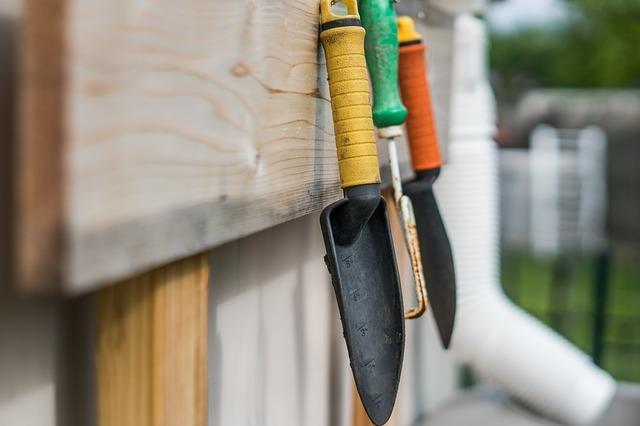
Did you know that nearly 50% of household water use in the summer goes toward outdoor irrigation? Efficient watering isn’t just about keeping plants alive; it’s about conserving resources, reducing costs, and fostering a thriving garden ecosystem. Setting up a well-designed irrigation system can transform your garden care routine, saving you time and effort while ensuring your plants receive exactly what they need.
Understanding Your Garden’s Water Needs
Get The Latest News!
Don't miss our top stories and need-to-know news everyday in your inbox.
Before diving into installation, it’s essential to assess your garden’s specific watering requirements. Different plants have varying moisture needs. For instance, succulents and drought-tolerant plants require less frequent watering than vegetables or flowering shrubs. Soil type also plays a crucial role: sandy soils drain quickly, demanding more frequent irrigation, whereas clay soils retain moisture longer.
Mapping your garden with these considerations in mind will help determine the type and placement of irrigation components. For example, grouping plants with similar water needs in zones can increase efficiency and prevent overwatering.
Choosing the Right Irrigation System
There are several types of irrigation systems suitable for gardens, each with distinct advantages:
Drip Irrigation: This system delivers water directly to the plant’s root zone through a network of tubes and emitters. It minimizes evaporation and runoff, making it highly water-efficient and ideal for vegetable beds and flower borders.
Soaker Hoses: These porous hoses allow water to seep slowly into the soil along their length. They are easy to install and work well for densely planted areas but may not provide uniform distribution over larger spaces.
Sprinkler Systems: Sprinklers spray water over a wide area and can be automated with timers. They are suitable for lawns or large garden beds but tend to lose more water to evaporation and wind drift.
Selecting the right system depends on the garden size, plant types, water availability, and budget. For example, a home vegetable garden could benefit from drip irrigation to conserve water and reduce disease risk, while a lawn might require a sprinkler setup for even coverage.
Planning and Designing Your Irrigation Layout
Effective irrigation begins with a detailed plan:
Measure Your Garden: Take accurate measurements of the garden area and mark plant locations.
Divide Into Zones: Group plants with similar water needs together. Each zone will be watered separately, allowing for tailored watering schedules.
Determine Water Pressure and Flow Rate: Check your water source’s pressure to ensure compatibility with your irrigation system. Excessive pressure can damage components, while insufficient pressure may result in poor coverage.
Sketch the Layout: Draw where pipes, hoses, emitters, and sprinkler heads will be placed. Include valves and controllers if applicable.
For example, a homeowner with a 500-square-foot vegetable garden might divide the space into four zones, each with a dedicated drip line calibrated to deliver 1 gallon per hour per emitter, ensuring precise watering.
Installation Step-by-Step
Once the plan is ready, follow these steps to install your irrigation system:
Gather Materials: Pipes or hoses, emitters or sprinklers, connectors, valves, timers, and tools.
Prepare the Site: Clear debris and level the soil where necessary.
Lay Out Pipes and Hoses: Position the main lines first, then branch off with smaller lines to individual zones or plants.
Install Emitters or Sprinklers: Attach at appropriate intervals based on plant spacing.
Connect to Water Source: Use a backflow preventer to protect your water supply and install a timer for automation.
Test the System: Turn it on and check for leaks, pressure issues, or areas with insufficient coverage. Adjust emitters and sprinkler heads as needed.
An anecdote from a community garden project illustrates the value of testing: after installation, they discovered one zone was under-watered due to a kinked hose, which was corrected before any plants were harmed.
Automating and Maintaining Your System
Automation through programmable timers can optimize watering times, typically early morning or late evening to reduce evaporation. Smart controllers that adjust watering based on weather data further enhance efficiency.
Maintenance includes seasonal checks for clogged emitters, leaks, and system wear. Flushing the system periodically prevents blockages, while winterizing in colder climates protects components from freeze damage.
Practical Tips for Maximizing Efficiency
Use mulch around plants to retain soil moisture and reduce irrigation frequency.
Regularly observe your garden for signs of overwatering (yellowing leaves) or underwatering (wilting).
Incorporate rain sensors to pause irrigation during rainfall.
Consider rainwater harvesting to supplement your system and reduce reliance on municipal water.
Final Thoughts
Setting up a summer garden irrigation system is a strategic investment in your garden’s health and sustainability. By understanding your plants’ needs, selecting the right system, planning carefully, and maintaining your setup, you can achieve consistent, efficient watering that supports vibrant growth while conserving valuable resources. With automation and thoughtful design, your garden can flourish with minimal manual effort, allowing you to enjoy the fruits of your labor more fully.
Send your news tips to news@edglentoday.com or on twitter @EdGlenTodayNews

